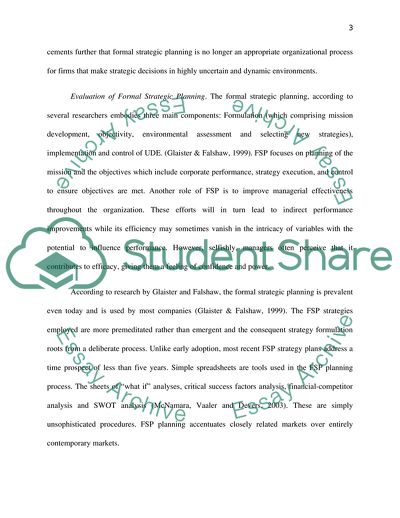Cite this document
(Critically evaluate the argument that formal strategic planning is no Essay, n.d.)
Critically evaluate the argument that formal strategic planning is no Essay. https://studentshare.org/business/1843227-critically-evaluate-the-argument-that-formal-strategic-planning-is-no-longer-an-appropriate-organisational-process-for-firms-that-make-strategic-decisions-in-highly-uncertain-and-dynamic-environments
Critically evaluate the argument that formal strategic planning is no Essay. https://studentshare.org/business/1843227-critically-evaluate-the-argument-that-formal-strategic-planning-is-no-longer-an-appropriate-organisational-process-for-firms-that-make-strategic-decisions-in-highly-uncertain-and-dynamic-environments
(Critically Evaluate the Argument That Formal Strategic Planning Is No Essay)
Critically Evaluate the Argument That Formal Strategic Planning Is No Essay. https://studentshare.org/business/1843227-critically-evaluate-the-argument-that-formal-strategic-planning-is-no-longer-an-appropriate-organisational-process-for-firms-that-make-strategic-decisions-in-highly-uncertain-and-dynamic-environments.
Critically Evaluate the Argument That Formal Strategic Planning Is No Essay. https://studentshare.org/business/1843227-critically-evaluate-the-argument-that-formal-strategic-planning-is-no-longer-an-appropriate-organisational-process-for-firms-that-make-strategic-decisions-in-highly-uncertain-and-dynamic-environments.
“Critically Evaluate the Argument That Formal Strategic Planning Is No Essay”. https://studentshare.org/business/1843227-critically-evaluate-the-argument-that-formal-strategic-planning-is-no-longer-an-appropriate-organisational-process-for-firms-that-make-strategic-decisions-in-highly-uncertain-and-dynamic-environments.


